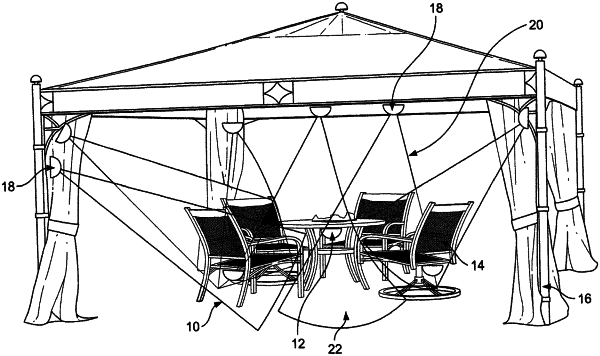|
1. A method of repelling mosquitos from a locality or proximity where humans or animals will be present and/or inhibiting the mosquito from seeking a blood meal, comprising: positioning lighting at a location and in an orientation that will at least one of generate a photo-taxis repellent response and inhibit blood seeking by the mosquito, such that the mosquito at least one of (i) is discouraged from entering a defined zone which the lighting protects, and (ii) has a reduced tendency to seek a blood meal within the zone; wherein the lighting is LED lighting and generates an intense light of at least 100 lux, with a colour temperature of greater than 5000K and has a cool white spectra with two peaks, a first major peak at about 450 nm-470 nm and a second lesser peak at about 500 nm-700 nm2 wherein the first major peak transitions to the second lesser peak at about 480 nm; wherein wavelengths of about 470 nm to 490 nm of the intense light have a relative radiant power of less than 20%; wherein the first major peak has a relative radiant power of about 100%; and wherein the second lesser peak has a relative radiant power of less than 40%.
|
